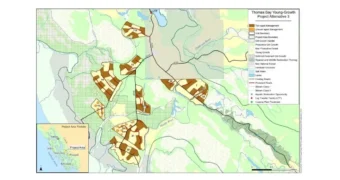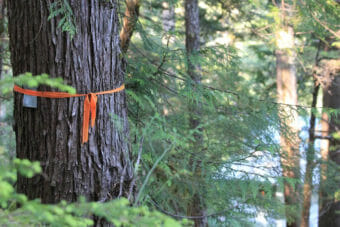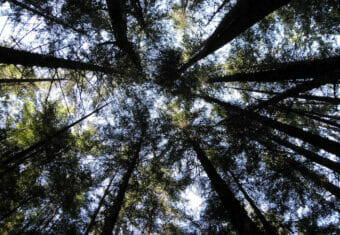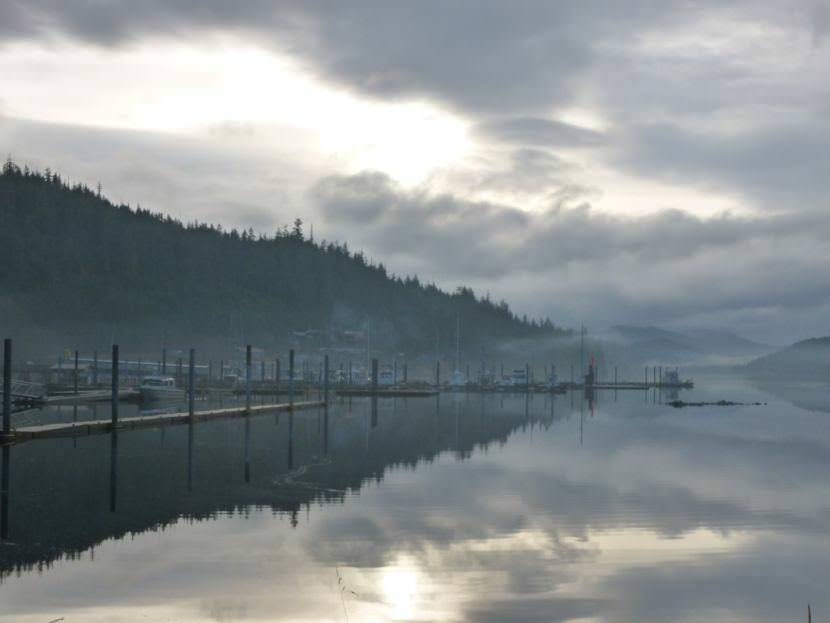
The U.S. Forest Service is proposing the harvest of up to nine square miles of young growth timber on Prince of Wales Island. It’s part of a years-long transition away from old growth logging in the Tongass National Forest — and some in the timber industry worry they’ll be left behind.
One of the project’s main goals is to provide local mills with three years’ worth of timber.
That would mean harvesting about 5,800 acres over 15 years. It’s a haul worth somewhere between $7 and $10 million.
The agency says the Thorne Bay Basin Integrated Management Project would be a much-needed boost to Prince of Wales Island’s timber sector.
“There is a need for young growth forest management now to produce future desired resource values, products, services, and forest health conditions that sustain the diversity and productivity of forested ecosystems,” the Forest Service’s plan read.
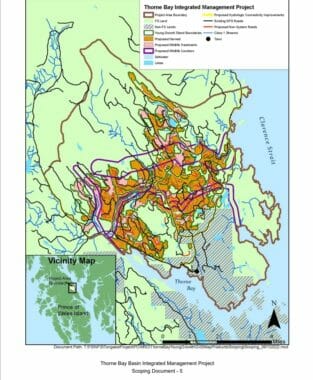
Grizz Nicholson owns Fair and Square Lumber in Coffman Cove. He said he’s a fan of the plan.
“I really support the transition to second growth as soon as possible,” Nicholson said.
He said the younger trees are easier on his equipment. And, he noted, they don’t have as many imperfections. That means he doesn’t waste as much turning the logs into lumber.
“When it comes to the amount of time it takes setting up to do the milling and, and the amount of waste that you get … for a small milling operation, that’s huge,” he said. “There’s enough wasted as it is, let alone defect waste.”
But Nicholson acknowledged that a transition towards younger trees will be a challenge for many in the timber industry.
“But it’s going to be hard on those mills whose business plan is sort of organized around cutting, especially red cedar,” he said.
The timber industry has long been geared towards old growth. And there’s plenty of demand — old growth Sitka spruce, for example, is prized by musical instrument manufacturers for its acoustic properties.
But in recent years, the federal government has pushed to transition Tongass logging towards young growth. The Obama administration revised a key planning document in 2016 to require the Forest Service to move away from old growth timber sales. And shortly after taking office, President Joe Biden’s administration announced a freeze on old growth sales in the Tongass. The Biden administration also is working to reimpose the Clinton-era Roadless Rule in the Tongass, which would protect roughly 168,000 acres of old growth.
Conservationists say moving towards young growth helps protect habitat for things like deer, salmon and wolves — and helps fight climate change.
But some in the region are skeptical that young growth can sustain Southeast Alaska’s dwindling timber sector. Jay Kohn owns JK Forest
Products in Thorne Bay, and said there’s just not enough young growth to keep mills like his in business.
“It would probably put half the mills on the island out of business, if not all the mills on the island out of business,” Kohn said.
Even now, Kohn said he can’t rely on a steady supply of it.
“It’s sporadic and very competitive,” he said.
He does agree that old growth has more imperfections, but explained those trees make a better finished product.
“Definitely the young growth tends to have less defects in the wood — however, the young growth itself is less mature wood and the visual cues are not the,” he said.. It’s not as visual(ly) pleasing. and (the) longevity of the wood isn’t there. It’s just not as pretty wood. It’s not the same. So it looks more like a piece of plywood.”
The state’s Department of Natural Resources recently proposed a controversial sale of some eight-million board feet of old growth timber on the northern side of the island.
Timber is only one part of the Thorne Bay Basin project. Other plans outlined in the proposal include planting native plants, restoration work on creek beds that are home to fish, and pre-commercial thinning to keep the environment healthy for wildlife.
“The purpose for thinning within wildlife corridors and terrestrial habitat areas is to increase the amount of light that reaches the forest floor to enhance the growth of forage plants to meet wildlife needs,” the draft plan explained.
The project also would add six miles of new temporary roads and one mile of permanent Forest Service System road, while cleaning up 42 miles of existing roads on eastern Prince of Wales Island. That work would be done with materials from existing quarries in the area.
“Seeking public input will help us ensure our ultimate decision factors in the needs and desires of the local community, as well as the visitors we receive,” said Mark Pentecost, a Craig and Thorne Bay District Ranger.
The public comment period for the Thorne Bay Basin project is open until Oct. 21.

